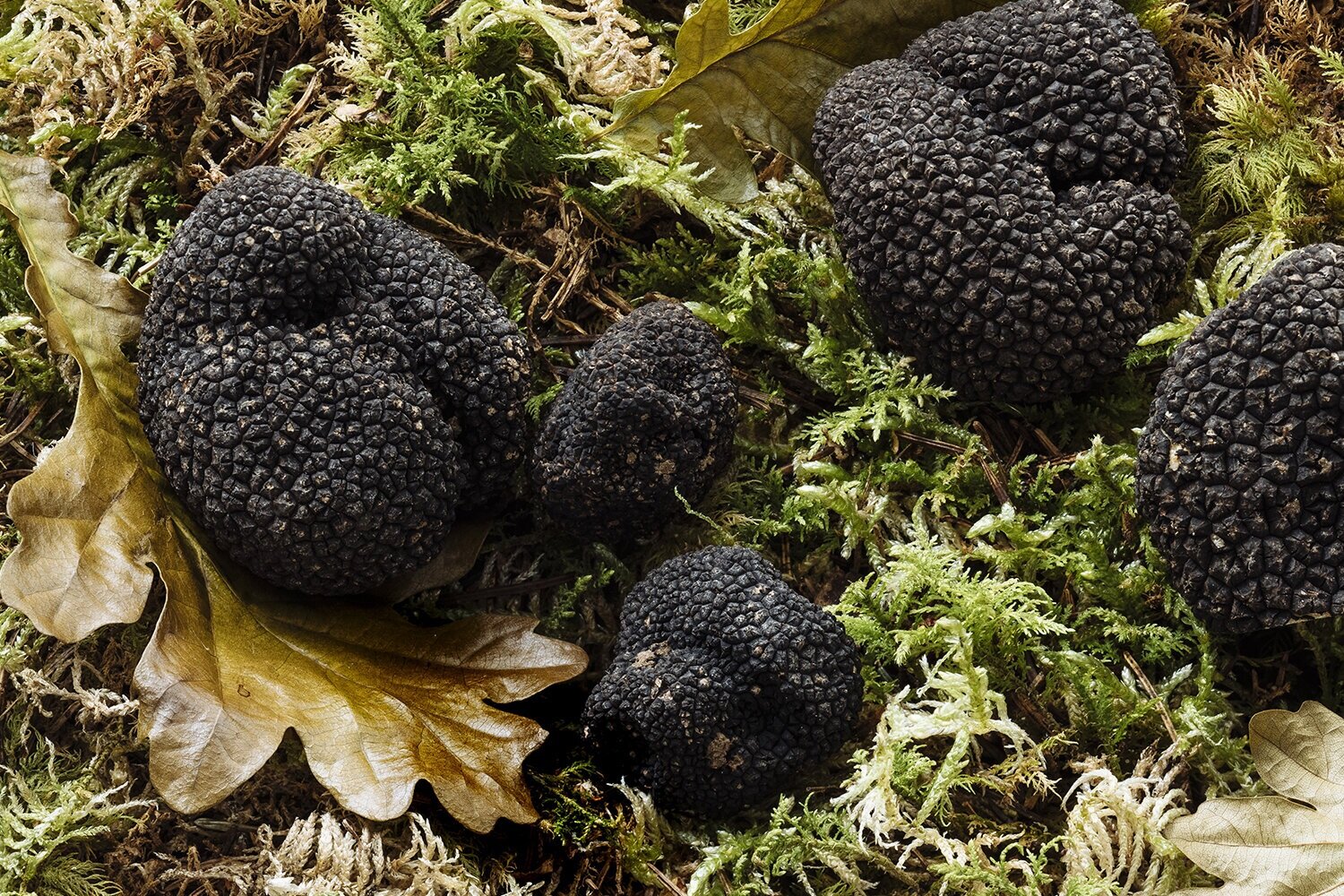What is a truffle?
A little history and Latin
Evoked since Antiquity and classified in the 19th century by the Italian physician Carlo Vittadini, the truffle belongs to the Tuber genus - from the Latin tuber (growth) - of the tuberaceae family. It is a mushroom known as " hypogeous ": it is born and develops underground - at a depth that varies between one and twenty centimeters - then reaches full maturity after about 290 days. The truffle has a more or less round and globular shape, a granular relief and unequal sizes depending on the species and its maturation at harvest.
About soils and seasons
It is found in certain types of calcareous soils, in particular at the foot of stunted and suffering oaks (otherwise known as " truffle trees ") with which it grows in a phenomenon of " symbiosis".
The truffle requires a temperate climate with well-defined seasons to develop at its best: winters that are not too cold, springs that alternate periods of humidity and heat, hot summers interspersed with rain and autumns that are not too wet.
Wild truffle fields have always existed in nature. Nevertheless, for centuries, plantations have been made by man - with natural plants on suitable land - to increase production and meet thegrowing interest of truffle lovers: this is truffle farming. The truffle became a luxury product, especially in France, in the 16th century, thanks to François I who introduced it on the royal table.
The harvest of truffles
The harvest of the truffle extends over a period ofabout three months which differs according to the varieties. The harvest is called cavage - from the Latin cavus (cavity, hollow). Truffles can be harvested in different ways: with dogs, pigs or even flies. Truffle dogs are preferred for "cavering" because they are more mobile, discrete and enduring. Dogs are trained for their sense of smell: almost anyone can become a truffle hunter, all they need is regular training! Once the truffle is spotted by the dog at the foot of the truffle tree, the " caveur " carefully digs it up with a metal pick called a " cavadou ".
Apart from the smell, another clue to the presence of truffles can take the form of a " burnt " - or "witch's circle" - visible at the foot of a tree. This burn is materialized by an absence of vegetation forming a circle under a truffle tree. Certain substances contained in the truffle act as a herbicide on the surrounding plants and grasses.
Selection and sale
After the harvest, the truffles are cleaned and sorted (smell, color, size, freshness, etc.) before being sold on truffle markets. In order to ensure its quality, the truffle grower carries out a traditional operation: the " canifage". By removing a small part of the truffle with a knife, it is possible to examine the inner quality of the fruit, its marbling and its color. The canifage also allows to distinguish the black truffle(Melanosporum) from the Chinese truffle, without gustative interest.
The main truffle markets are located in the South-East of France. The most important market in Europe is Richerenches where 30% of the national production is traded.

